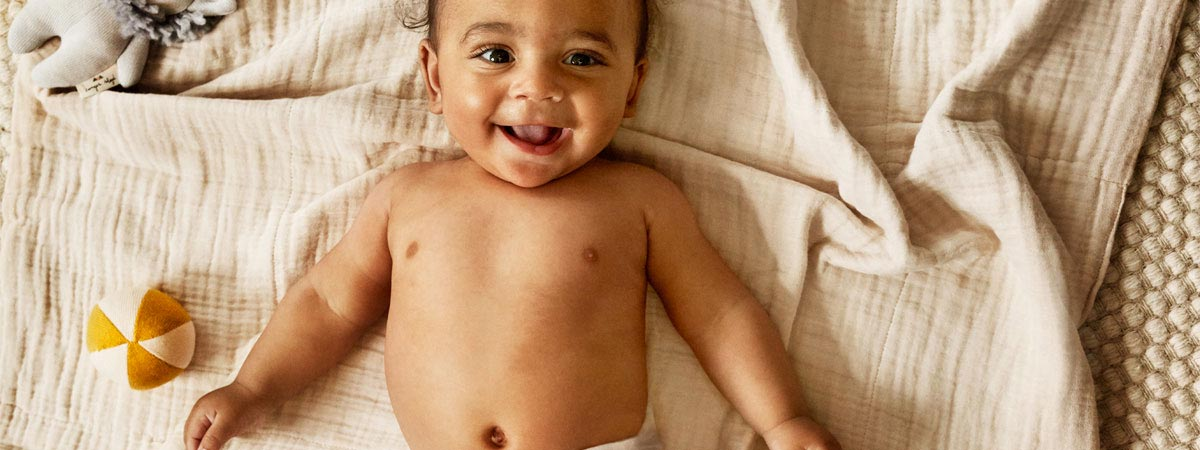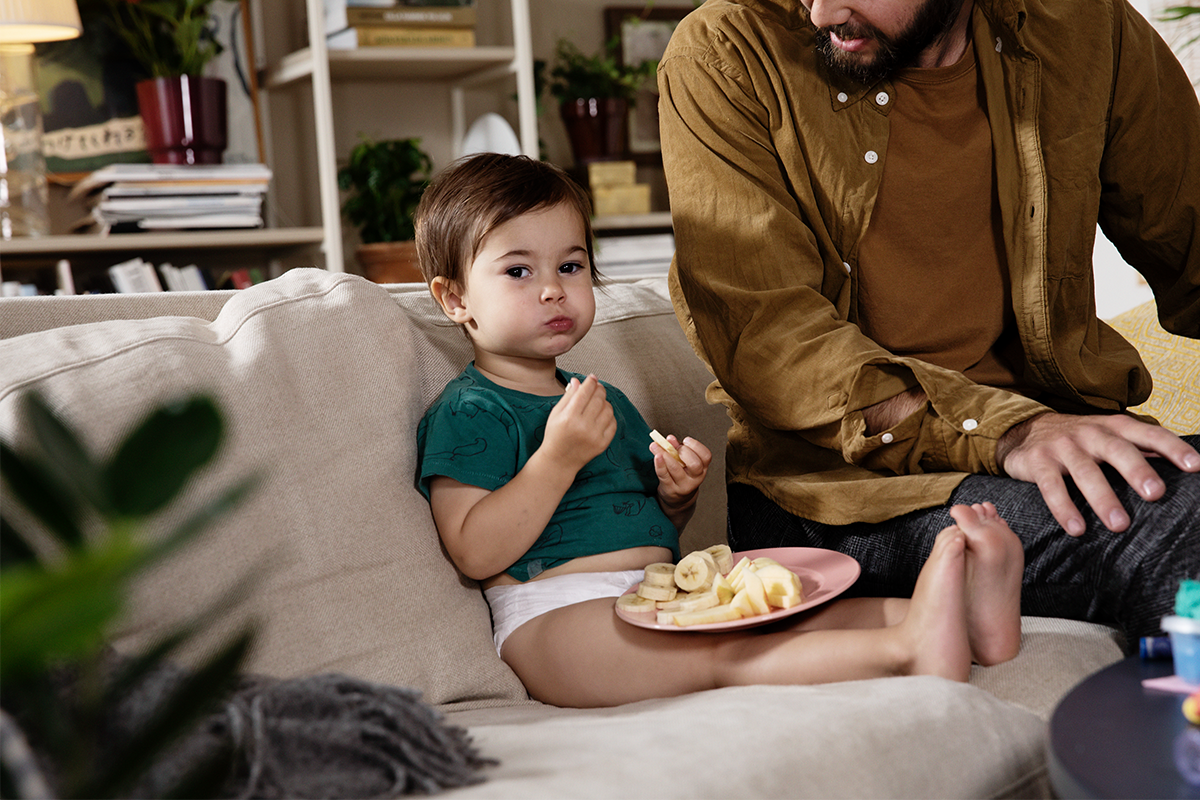When do babies start talking?

Babies babble, make sounds and enjoy listening to others talk. Around the age of six months, babies start to make their own deliberate sounds and by the time they are one year old, they can start saying their first words.
Suddenly you hear it, the very first word – it’s usually a big event, a milestone, and something that parents treasure. That word has come about through crying, babbling and incredibly hard work on the part of the child – developing their language.
Baby’s language
Even as a newborn, babies actually use innate verbal expressions to communicate their needs. Crying is the most obvious of these and research shows that from the very beginning it contains nuances that signal different kinds of needs. The newborn also has an instinct for learning to communicate more effectively than just through different types of cries. As a result, it mimics both sounds and expressions and by a few months of age, babies can use a variety of vocal cord and vocal sounds in a dialogue. It’s exactly what us adults do, although we use words. Since body language is the cornerstone of our communication, a baby uses gestures and facial expressions in addition to the rehearsed sounds when trying to make themselves understood, and these are just as important as verbal communication.
Around six months of age, most babies begin to babble and have more and more conscious ‘talking’ moments where the sounds come together in sentence-like bursts. They are similar to the language the baby hears around them and consist of syllables with both vowels and consonants. Sometimes they may sound like real words but they are still imitations, rather than words that mean anything specific. This is not to say that the child does not understand words, on the contrary, babies already know a lot of words and during the second six months of life their understanding of language increases enormously. Body language gestures also develop significantly at the same time, becoming clearer and more communicative.
By the time your child is around one year old, they usually have a good understanding of language and their first words can begin to emerge. Often, young children use their own sounds for different objects and activities before they start using the right words. You may have seen children pointing at a dog and saying woof-woof, or a car and making a brum brum noise? Starting with sound words is common and one-year-olds tend to like to name most things they see in their environment with their parent.
How can you help language development?
Talking a lot with your baby and paying attention to their communication attempts will also encourage language development. It might be easy to think that your child doesn’t understand because they can’t answer your questions, but that’s not the case at all. Babies hear what you say and model their language on yours, even before they can express themselves. So chatting with your parent in everyday life is by far the best way for a baby to learn to talk, much better than educational apps or other methods you may come across. Chatting about everyday things also strengthens your relationship and makes learning language more fun. Imitation and eye contact often facilitate the interaction between the child and the person they are ‘talking’ to and also stimulate language.
From words to sentences
After the age of one and a half, many children start saying words and eventually two-word sentences, but the rate at which children’s language develops is very different! Some children talk almost fluently by the age of two, while others have very basic language until the age of four – or even longer if the child has language difficulties. You might think it’s sweet and fun to have a small child who talks a lot, but it might be stressful to have a child who starts a little later, or thinks there are more exciting things to do. Try to enjoy your child’s language – whether it’s verbal or another way you’ve found together to understand each other – and recognise that each child is different and develops at a different rate when it comes to different things.
Promoting language development
Your healthcare provider will closely monitor language development and they usually let you know if anything is out of the ordinary and requires a bit of extra encouragement. As a parent, you don’t need to keep track of this yourself. Your important task in terms of language is instead to ensure that your child has the opportunity to use and practise their language in fun activities such as playing, reading stories, talking about life or using their imagination. Reading books is often enjoyed by young and old alike and is also a great way to increase a child’s vocabulary. Children also tend to enjoy a variety of language games such as rhymes and songs. But the most important thing is still the everyday conversations between you and your child. Language is for interacting and communicating with other people – it shouldn’t be a task to be accomplished, it should just be fun and enjoyable!
Multilingualism
Children are excellent students and learning two languages right from the start is no problem. In reality, multilingual children follow language development as expected and no language difficulties linked to multilingualism appear to exist, as long as the child is exposed to the languages in their daily environment.
Please note that all information above is based on Swedish recommendations.


